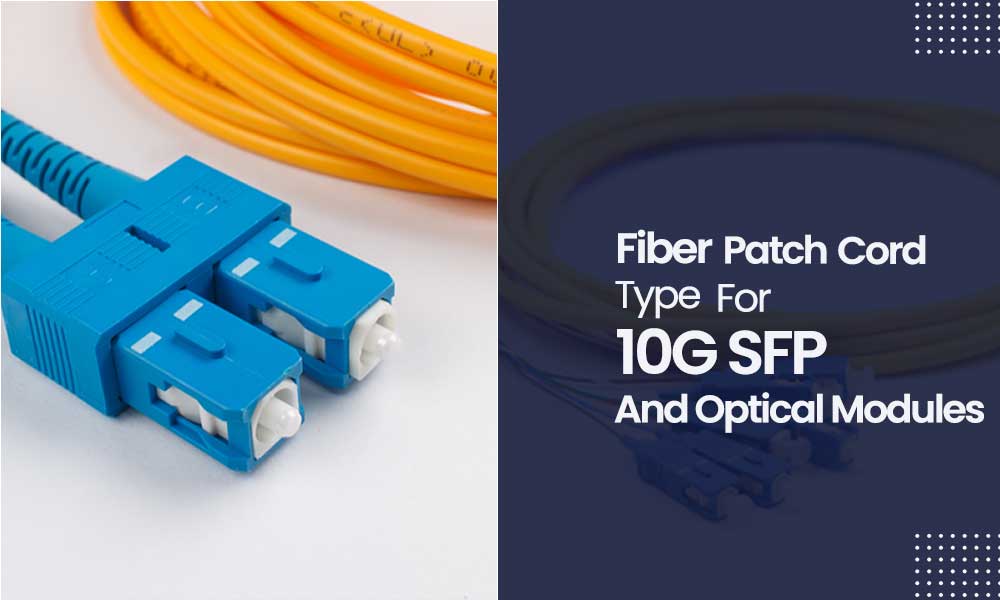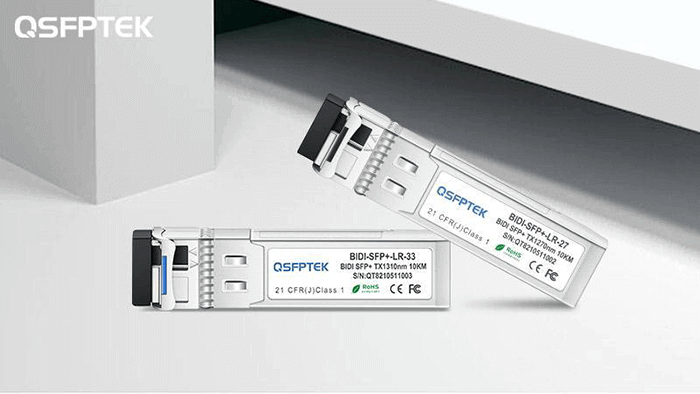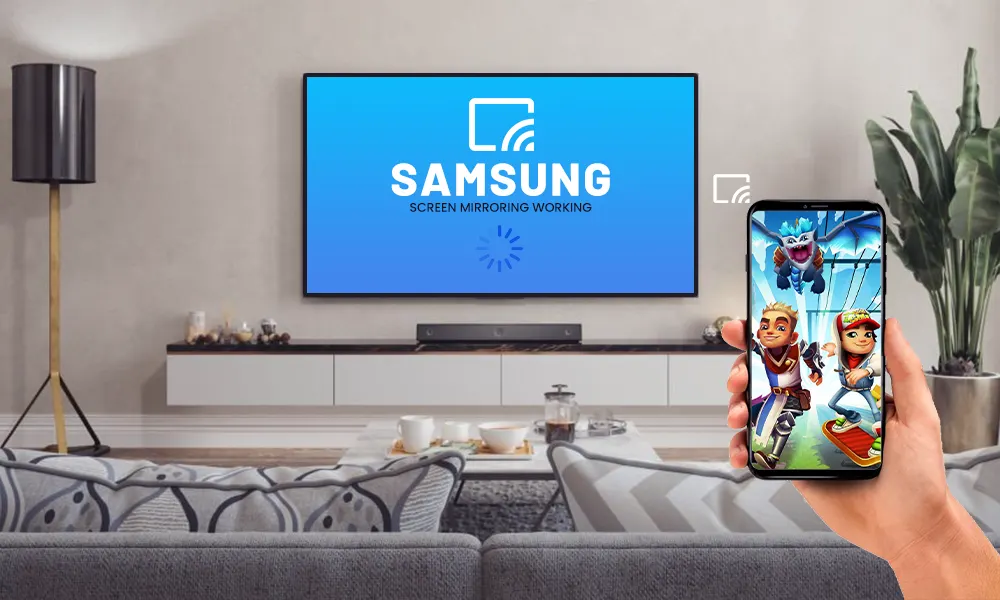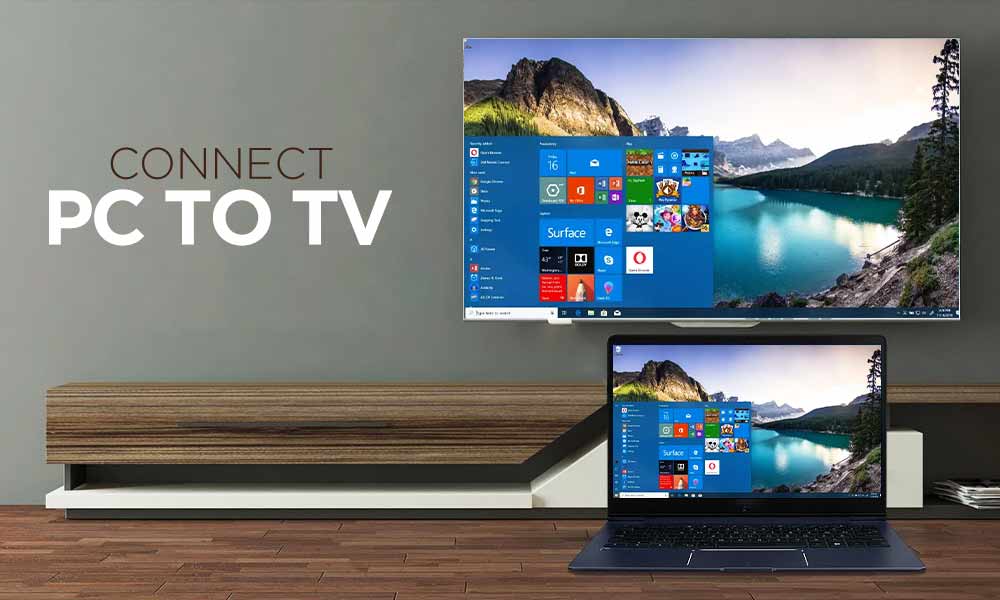How to Choose Fiber Patch Cord Type for 10G SFP+ Optical Modules?

In data center wiring, how to match the corresponding fiber patch cord types for different optical module types? In this regard, this article will be organized in detail, I believe it can provide corresponding help to everyone.
Optical modules have a variety of classification forms, which can be classified according to package (SFP, SFP+, XFP, XENPAK, X2, SFP28, QSFP+, QSFP28, CFP2, etc.), according to the transmission distance, wavelength, and according to speed. See how to match the corresponding fiber patch cord type for 10G SFP+ optical modules.

Types of Fiber Patch Cords
When judging the type of fiber optic patch cord, the interface type is one of the essential judging factors. We know that the fiber interface is the physical interface used to connect fiber optic cables, usually, there are several types such as SC, LC, FC, ST, MPO/MTP, etc. The optical fiber interfaces corresponding to different optical modules are not the same. The interface of common optical modules usually has 2 ports (one for receiving optical signals and one for transmitting optical signals), namely duplex SC or duplex LC. Therefore, duplex SC/LC fiber jumpers are required. The BiDi single-fiber optical module has only one port (which can both receive and transmit optical signals), so a simplex optical fiber patch cord is required.
In addition to judging the type of fiber optic patch cords according to the interface type, the transmission mode of the fiber optic patch cord also needs to be considered. Single-mode fiber patch cords use 9/125 fiber diameter fiberglass, while multimode fiber patch cables use OM1 62.5/125 fiber diameter or OM2 50/125 fiber diameter fiberglass, in addition, 10G OM3 and OM4 multimode fiber Jumper type. Different jumpers are suitable for different usage scenarios. Single-mode fiber optic patch cords support long-distance transmission, while multi-mode fiber optic patch cables are generally used for short-distance links.
10G SFP+ Optical Module with Corresponding Fiber Patch Cord Type
10G optical modules refer to optical modules that can send and receive 10.3Gbps G data signals per second. According to different packages, 10G optical modules can be divided into XENPAK optical modules, X2 optical modules, XFP optical modules, and SFP+ optical modules. At present, 10G SFP+ optical modules are more popular. The reason why it is very popular is because of its strong compatibility and size. Small, low cost, low power consumption, and other factors.
The following table mainly introduces the types of fiber jumpers used for 10G SFP+ optical modules.
| SFP+ Type | Product Description | Fiber Opitc Cable Type | Fiber Type |
| 10G Multimode Dual-fiber SFP+ | 10G SFP+ 850nm 300m | LC-LC MMF Duplex Fiber Cable | OM2/OM3 |
| 10G Single-mode Dual-fiber SFP+ | 10G SFP+ 1310nm 10km | LC-LC SMF Duplex Fiber Cable | OS2 |
| 10G SFP+ 1310nm 20km | |||
| 10G SFP+ 1310nm 40km | |||
| 10G SFP+ 1550nm 40km | |||
| 10G SFP+ 1550nm 80km | |||
| 10G Single-mode Single-fiber SFP+ | 10G SFP+ BiDi 10km | LC-LC SMF Simplex Fiber Cable | OS2 |
| 10G SFP+ BiDi 20km | |||
| 10G SFP+ BiDi 40km | |||
| 10G SFP+ BiDi 60km | |||
| 10G SFP+ BiDi 80km |
Some users will ask, can single-mode fiber patch cords be inserted into multi-mode optical modules? First of all, the divergence angle of the optical signal emitted by the multi-mode optical module is large, the aperture of the single-mode fiber jumper is small, and the light that runs into the fiber is too small, so it cannot be transmitted over a long distance, and the single-mode fiber jumper is very long and has not reached the end light. It may be attenuated, so the link cannot be connected in this way. On the other hand, it is not recommended to connect optical modules with different transmission distances, because the interface indicators of optical modules with different transmission distances are quite different. At the same time, if only short-distance transmission is required, there is no need to equip optical modules with long-distance transmission. Optical modules with long distances cost more.










